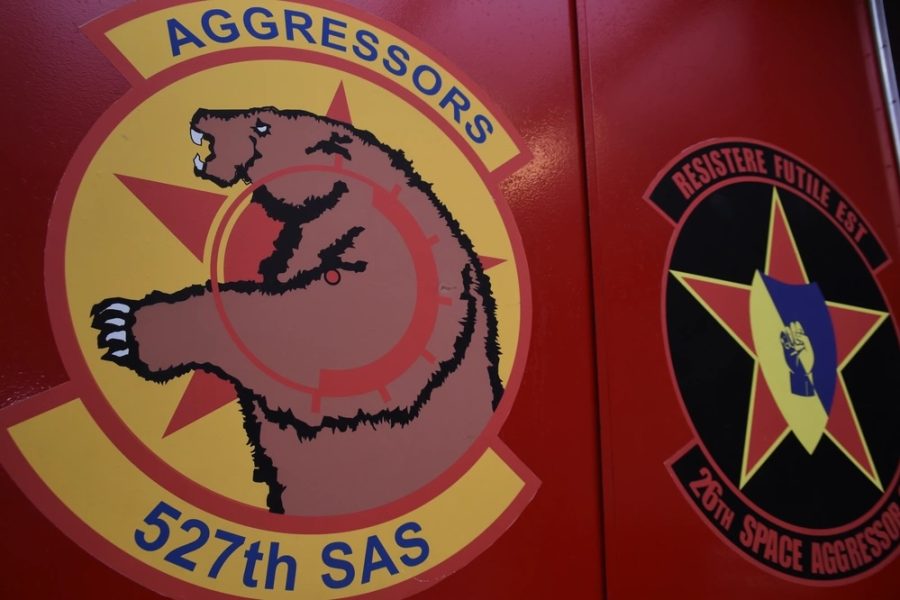Occupying terrain is a fundamental principle of warfare, even if that terrain is the electromagnetic spectrum and mostly invisible to the naked eye. That’s where the Space Force’s 527th Space Aggressor Squadron teaches a wide range of military units how to hold their “ground.”
“When you call up an aggressor unit, you’re getting an opportunity to train against a thinking adversary and better prepare for the real thing,” Maj. Kyle “Gambit” Schroeder, chief of weapons and tactics for the 527th SAS, told Air & Space Forces Magazine. “We can replicate a disgruntled guy with some communications equipment in his garage all the way up to a well-trained electromagnetic attack force.”
Electromagnetic attacks often come in the form of jamming access to satellite communications or position, navigation, and timing systems such as GPS. At its core, jamming means blasting a more powerful signal on top of the signal being jammed. The 527th SAS teaches techniques to overcome jamming, depending on the training audience’s expertise and equipment.
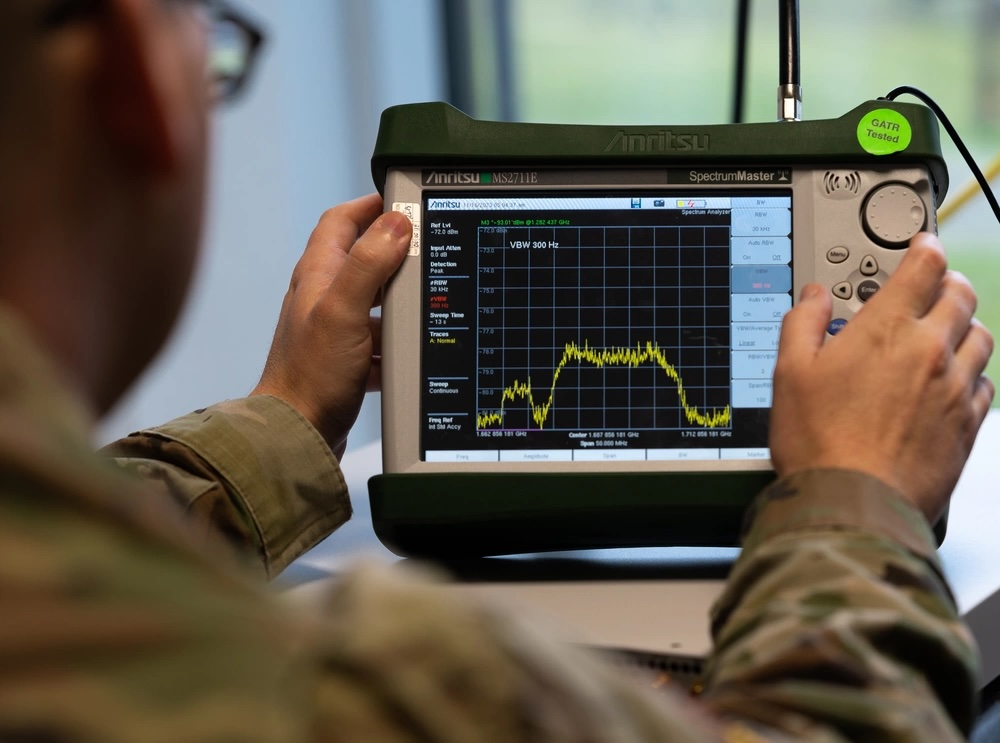
For example, when satellite communications are down, one of the most basic techniques is to find a different method of communication, such as a cell phone or a walkie-talkie. A more sophisticated technique is to use a spectrum analyzer, which displays what’s going on in the electromagnetic spectrum. The analyzer does not show whether signal interference is intentional, but the 527th teaches how to read the waveform for clues.
“We teach a few techniques like, ‘hey, this type of waveform indicates a little more thought went into building this, a little more intentionality went into the placement of it,’” Schroder explained. “And then if I move my signal, and if that adversary signal follows me, now I’ve got a little more information like ‘OK, maybe I’m dealing with someone who knows what they’re doing.’”
The tactics get more complex from there: dummy signals for an adversary to target but which are not actually passing data, or hiding a signal in a noise floor.
“If you think of a pool of water, if I put something underneath that water, then it’s more difficult to see,” the major said. “There are techniques to hide under the noise floor where I don’t even see it, unless I’m really looking or I have very specific tools in order to do that.”
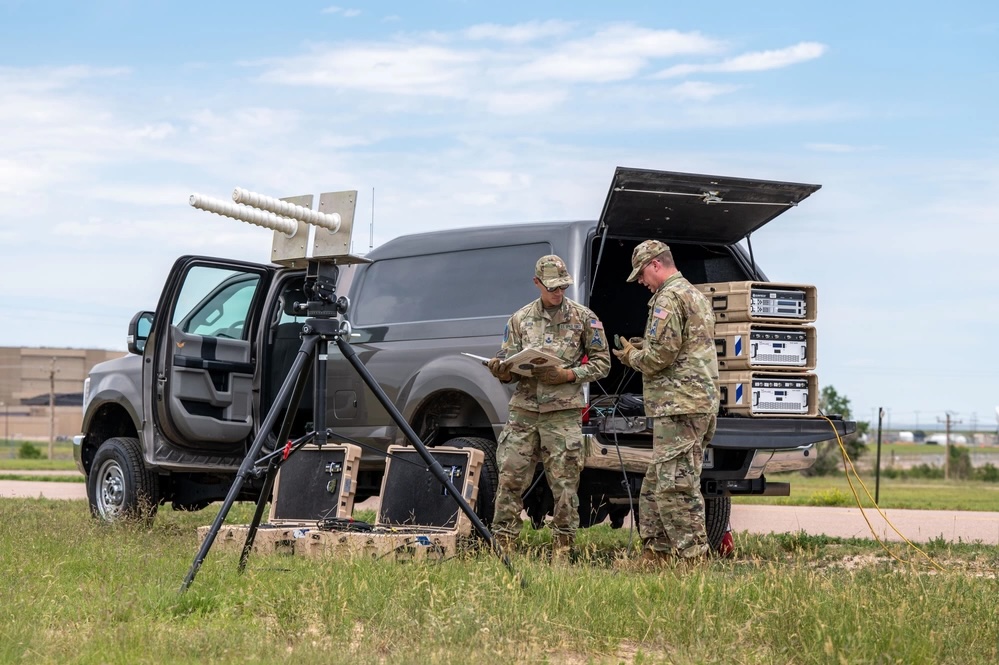
Then there are more brute force techniques, such as taking up a lot of territory on the spectrum and cornering the targeted signal into a small slice of it.
“They can take up a ton of space on the electromagnetic spectrum, to the point where I’m not able to deny that signal with the equipment that I have,” Schroeder explained. “It’s essentially like you are putting it in a tank: it doesn’t matter if you shoot at it, it’s still gonna go.”
Choosing the right technique and responding to the enemy’s move is like a game of chess, he said, and it helps to know your enemy. The 527th works with information gathered by the intelligence community to simulate real-world threats from possible enemies such as Russia or China.
“We use that intelligence to paint a picture for the training audience: ‘hey, based on this exercise and this adversary threat that you’ve asked us to replicate, we think it would be employed in this particular way against you to achieve these desired effects,” the major said.
The 527th traces its roots back nearly 50 years to the Constant Peg program, where Air Force, Navy, and Marine Corps fighter pilots battled against American-flown MiG fighters, giving crews the skills and confidence to beat them in real combat. Though Constant Peg shut down in 1988, aggressor fighter squadrons live on in all three services at exercises such as Red Flag, where military aircrews from around the world train against each other in mock air battles.
In 2000, the 527th, a former fighter aggressor squadron that flew F-5s in the 1970s, was reactivated to deny GPS at Red Flag. Over time, the 527th grew to include denying satellite communications and started an orbital warfare flight, which in 2021 split off to become the 57th Space Aggressor Squadron. More recently, the 527th sprouted a cyber flight, which the Space Force intends to split off into its own squadron, Schroeder said.
The cyber flight is the largest in the 527th, and they can make a mess for the training audience, the “Blue Force” by severing communications or stealing data and alerting the enemy to blue’s plans.
“We’ve had a lot of success simply causing havoc in a network,” Schroeder said.
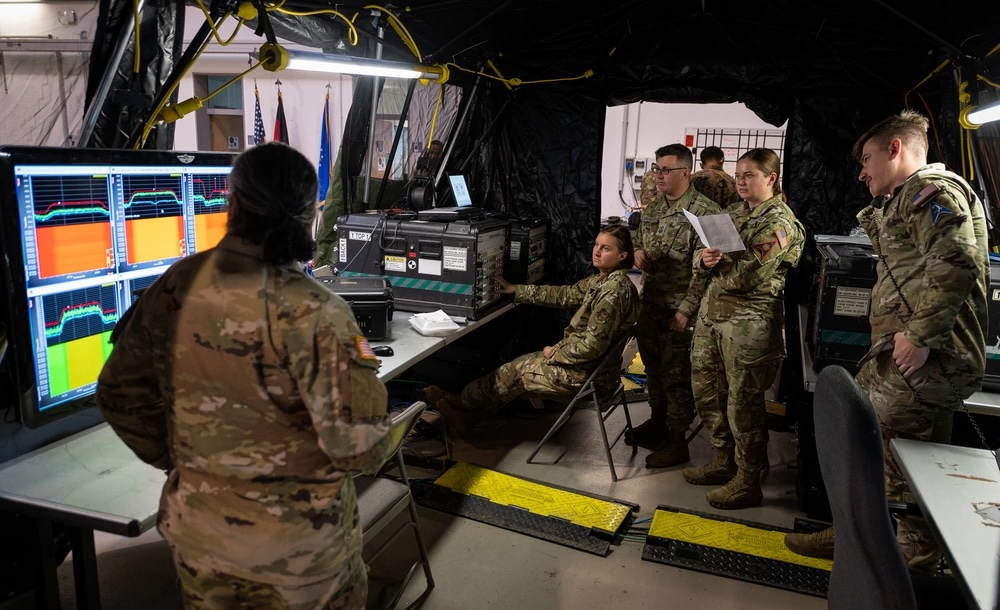
Cyber aggressors often work on “cyber ranges” that are isolated to avoid damaging real-world networks and hardware.
“We’re seeing a rising number of actors that are government-sponsored, and are very highly capable of exploiting organizations,” Schroeder said. “So it’s critically important that we have the cyber aggressor mission in-house. It’s growing, they’re going to be more evolved, they’re just still in the stand-up phase right now.”
While the cyber flight tends to work with highly-specialized professionals due to the high bar for cyber literacy required, the EW side works with just about anyone in the military, including Army and Navy special operations and Air Force expeditionary communications troops.
“I’ve seen every level of knowledge, all the way from highly-experienced to ‘this is my first day pointing an antenna at a satellite,’” Schroeder said. “When it comes to [radio frequency] or jamming, it’s everyone who has to interact with that radio or that communications equipment.”
For exercises in the continental U.S., the 527th can usually provide effects by firing at satellites from its dishes at Schriever Space Force Base, Colo., but it can send teams with jamming equipment farther afield if necessary. No matter where the effect is generated, a team of aggressors will often hit the road to provide in-person instruction.
“It’s a lot better to put a face to a name,” Schroeder said. “Part of our charter is to teach, so we want to not only provide that effect, but also explain to you ‘hey this is the adversary, this is what they are capable of, here is how you can mitigate that.'”
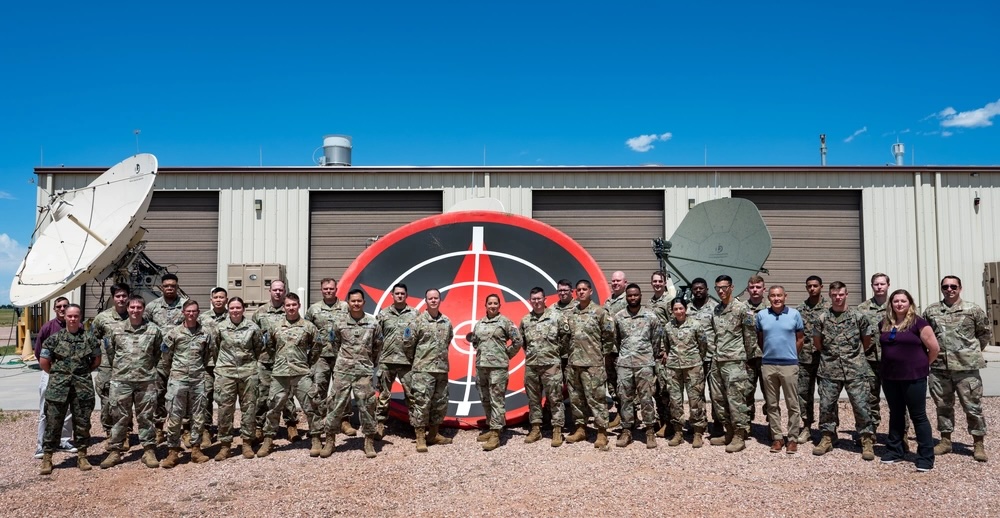
In 2023, the 527th was named the Department of the Air Force’s Outstanding Level II Electromagnetic Warfare Unit of the Year.
“It is better to lose to the aggressors 100 times than to lose to a near-peer adversary once,” squadron commander Lt. Col. C. Gene “Shocker” Adams said in a press release at the time.
The squadron’s mission has expanded over the years, and its ranks now include embedded detachments from the Navy and Marines. But the Cold War-era aggressor spirit remains in the form of Soviet red stars painted on the squadron’s satellite dishes and woven into its morale patches. Despite the enemy colors, the purpose of the 527th is to make “the good guys” better. Shroeder recalled working with the 53rd Space Operations Squadron after it transitioned into the Space Force from the Army, where it was called the 53rd Signal Battalion.
During its Army days, the 53rd provided satellite communications for Soldiers but had no experience with electromagnetic warfare. In a training event, the 527th fired live energy at a 53rd SOPS satellite, but it took the new squadron two days just to notice it.
“It’s not a dig against them, we just didn’t set them up or frame them for success at all as a space community,” Schroeder said.
The 527th showed their fellow Guardians how to detect and mitigate the threat, and the 53rd leapt at the chance to try it again.
“It was just extremely exciting for me to see that,” the major said. “Here’s this community of people that had been treated as a cable company, and we got them the opportunity, the reps to train against an adversary and they absolutely loved it. They were highly motivated to improve and do whatever they could in order to prepare for that great power competition.”
